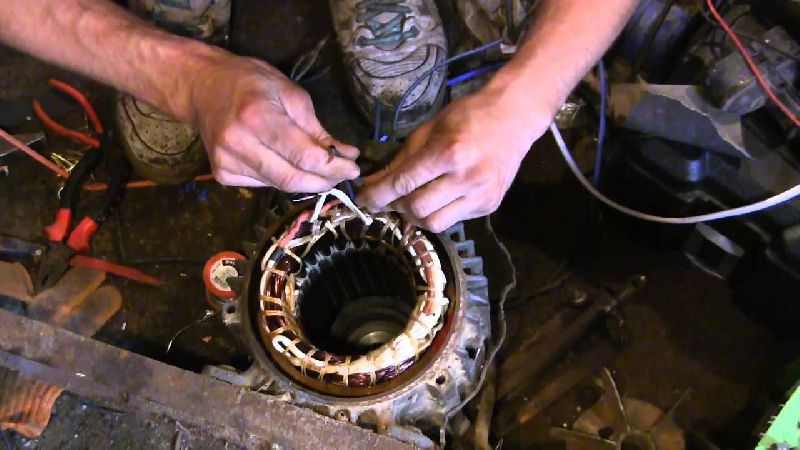Electric motor - Construction of induction motors - Britannica

Some Known Questions About What's the Difference Between AC Induction, Permanent.

Type of A/C electric motor Three-phase totally-enclosed fan-cooled (TEFC) induction motor with end cover on the left, and without end cover to show cooling fan on the right. In TEFC motors, interior heat losses are dissipated indirectly through enclosure fins, primarily by forced air convection. Cutaway view through stator of TEFC induction motor, showing rotor with internal air flow vanes.
An induction motor or asynchronous motor is an Air Conditioner electric motor in which the electrical present in the rotor needed to produce torque is gotten by electromagnetic induction from the electromagnetic field of the stator winding. An induction motor can therefore be made without electrical connections to the rotor. More In-Depth can be either wound type or squirrel-cage type. squirrel-cage induction motors are commonly utilized as commercial drives because they are self-starting, reliable and affordable.
Although generally utilized in fixed-speed service, induction motors are significantly being used with variable-frequency drives (VFD) in variable-speed service. VFDs provide especially essential energy cost savings chances for existing and prospective induction motors in variable-torque centrifugal fan, pump and compressor load applications. Squirrel-cage induction motors are very extensively used in both fixed-speed and variable-frequency drive applications.
The Only Guide for Induction Motor Basics - The Engineering Mindset
By manually turning switches on and off, Walter Baily showed this in 1879, successfully the first primitive induction motor. The first commutator-totally free single-phase Air Conditioner induction motor was developed by Hungarian engineer Ott Blthy; he used the single-phase motor to propel his invention, the electrical energy meter. The first AC commutator-free three-phase induction motors were independently developed by Galileo Ferraris and Nikola Tesla, a working motor design having been shown by the previous in 1885 and by the latter in 1887.
In April 1888, the Royal Academy of Science of Turin released Ferraris's research on his AC polyphase motor detailing the foundations of motor operation. In Might 1888 Tesla provided the technical paper A New System for Alternating Current Motors and Transformers to the (AIEE) explaining 3, four-stator-pole motor types: one having a four-pole rotor forming a non-self-starting hesitation motor, another with an injury rotor forming a self-starting induction motor, and the third a true simultaneous motor with an independently ecstatic DC supply to the rotor winding.
